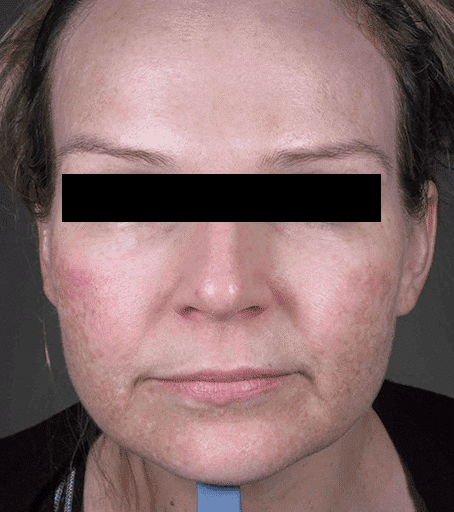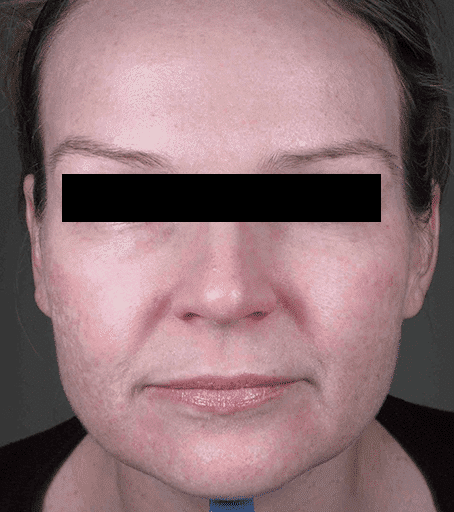
-Tixel is a type of Fractional resurfacing that uses controlled heat to remodel and stimulate collagen production.-Unlike other Fractional treatments, Tixel does not use laser light and only treats a predetermined area of skin.-The smaller fractions of treated skin allow for faster recovery.-Tixel is particularly effective for Mild to moderate early Acne scars.










Tixel is not a one-size-fits-all solution for acne scarring. Scar directed treatments are generally considered the best approach for addressing different types of acne scars. That being said, Tixel is particularly effective for early acne scarring, especially in patients who are taking isotretinoin-Oratane.
While fractional laser resurfacing has been shown to be effective and safe for patients on these medications, it is worth noting that some forms of acne scars respond better to treatment than others. Deeper, more severe acne scars may require CO2 laser and keyhole surgical subcision to improve their appearance, while red acne scars tend to do best with vascular lasers, and brown acne scars tend to respond well to picosecond lasers.
In summary, while Tixel can be a great option for early acne scarring, it is important to consider scar-directed treatments and the specific type of acne scar being treated to achieve the best possible results.

While Tixel can be an effective treatment for many forms of acne scarring, there are certain types of scars that do not respond well to this treatment. For example, hypertrophic or raised acne scars do not respond to Tixel resurfacing. Instead, pulse dye laser, steroid injections and laser assisted drug delivery are often used to treat this type of acne scarring.
Similarly, ice pick, severe atrophic, and rolling scars also do not respond well to Tixel resurfacing. Instead, these types of scars are best treated with peels, lasers, and surgery.
On the other hand, post-inflammatory hyperpigmentation (PIH), which presents as brown marks, is not considered a type of scarring, but rather a discoloration of the skin. PIH is best treated with picosecond lasers and other similar devices.
In short, while Tixel resurfacing can be effective for many types of acne scarring, it is important to note that not all scars will respond well to this treatment, and that other scar-directed treatments may be more appropriate for certain types of scarring.

Yes, Tixel is a treatment that can be used on all skin types, including ethnic and Asian skin. Unlike laser energy, Tixel uses a short pulse of controlled heating to remodel the skin. This means that Tixel is a gentler and less invasive treatment compared to some laser-based therapies, making it a safer and more effective option for a wide range of skin types.
Overall, Tixel is a versatile treatment that can be used safely and effectively on all skin types, thanks to its gentle and non-invasive heating technology.

Yes, fractional treatments such as Tixel, microneedling, and fractional laser resurfacing are generally considered safe treatment modalities for patients taking isotretinoin (Oratane / Roaccutane).
Revised guidelines published in 2016 allow for most acne scar treatments to be performed while taking isotretinoin, with the exception of fully ablative lasers and segmental or full face deep chemical peels (TCA CROSS excluded). This means that Tixel treatment is safe to undergo while taking isotretinoin, but your dermatologist may need to adjust the treatment plan or dosage to ensure your safety and optimise your results.

The number of Tixel treatments required can vary depending on the severity of your acne scars and your desired results. In general, most patients require between 3 to 6 treatments, which are spaced 4 to 6 weeks apart.
It's important to keep in mind that the exact number of treatments needed may vary based on individual factors, such as the depth and extent of your acne scarring, and your skin's response to the treatment. Your dermatologist can provide you with a more personalised treatment plan and help you determine the optimal number of Tixel treatments to achieve your desired results.
Most patients typically require between 3 to 6 Tixel treatments, spaced several weeks apart, to achieve optimal results for the treatment of their acne scars.

If your acne is well controlled, you can expect to start seeing results within 4 to 6 weeks after your Tixel treatment. However, it's important to keep in mind that optimal results are typically achieved after a series of 3 to 5 sessions, spaced several weeks apart.
Maximal results from Tixel treatment are typically seen within 10 to 14 weeks after your initial treatment. This timeline can vary depending on individual factors such as the extent and severity of your acne scarring, your skin type, and your body's response to the treatment.

Tixel resurfacing is known for its quick recovery time, which typically ranges from 1 to 4 days depending on the number of passes and energy level used during treatment. After Tixel resurfacing, it is common to experience some post-treatment redness and small dots on the skin, but these typically fade quickly.
One of the benefits of Tixel resurfacing is that it has less downtime compared to laser resurfacing, yet produces similar results. In fact, you can typically wear makeup or tinted sunscreen to cover up any redness or dots on the skin as soon as the day after treatment.

Tixel is typically recommended for individuals who have acne scars that are less than 3-6 months old or scars that are mildly depressed with some redness. This treatment is particularly effective for patients who are taking isotretinoin (Oratane/Roaccutane). Early treatment of acne scars using Tixel can often yield positive results, and in many cases, it can reduce the need for more invasive treatments.
For all appointment enquiries, medical referrals and urgent enquiries please contact us at info@scarsandlasers.co.nz or (09) 524 5011.
